In Loving Memory
Dr. Narinder S Kapany
1926 - 2020
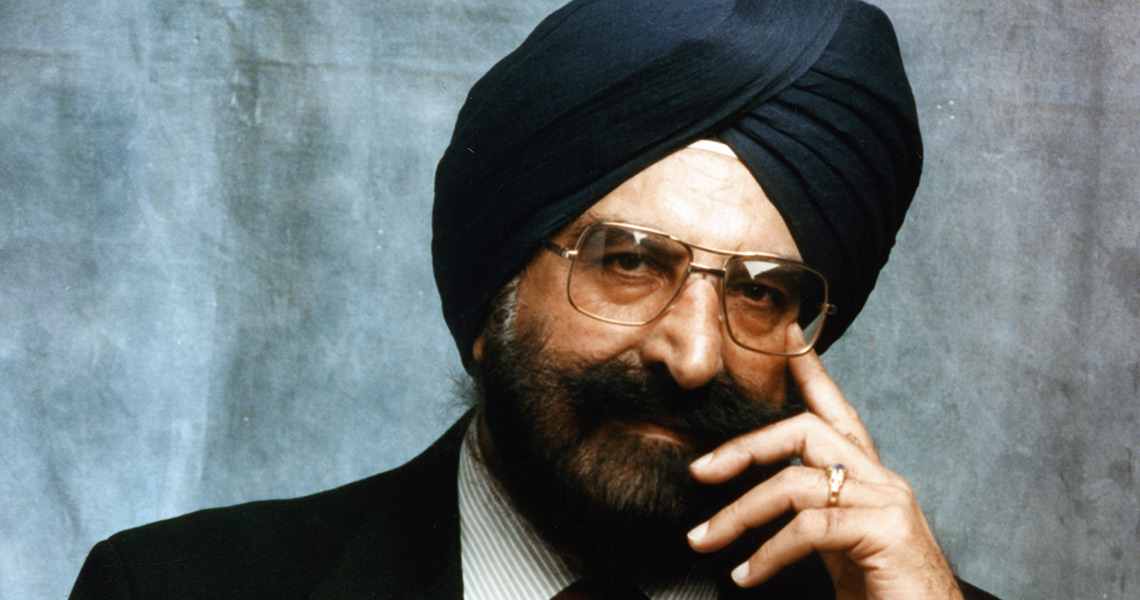
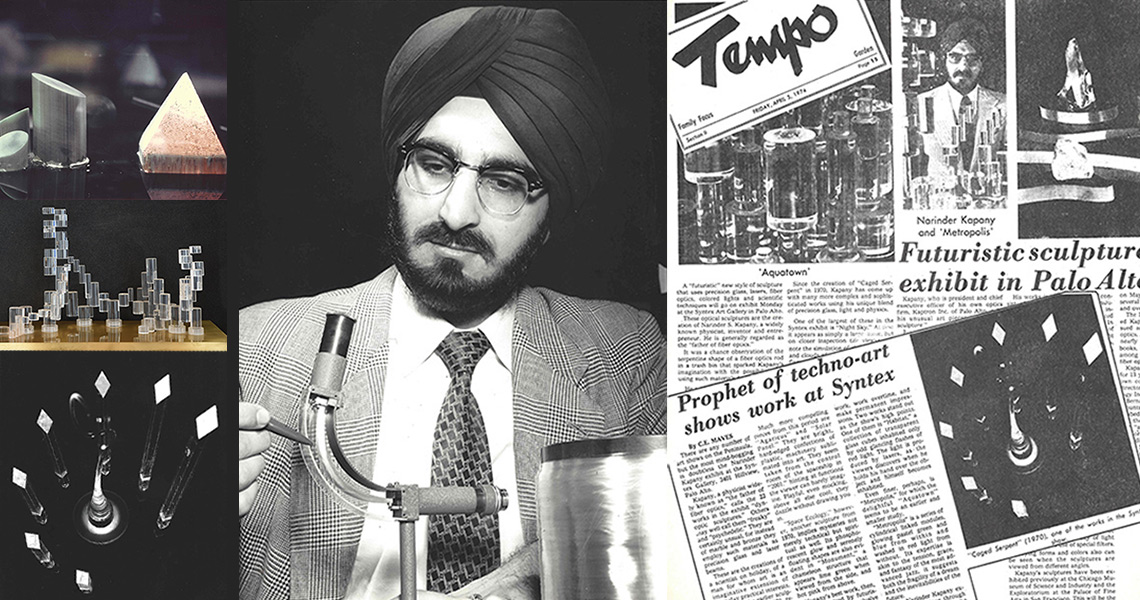
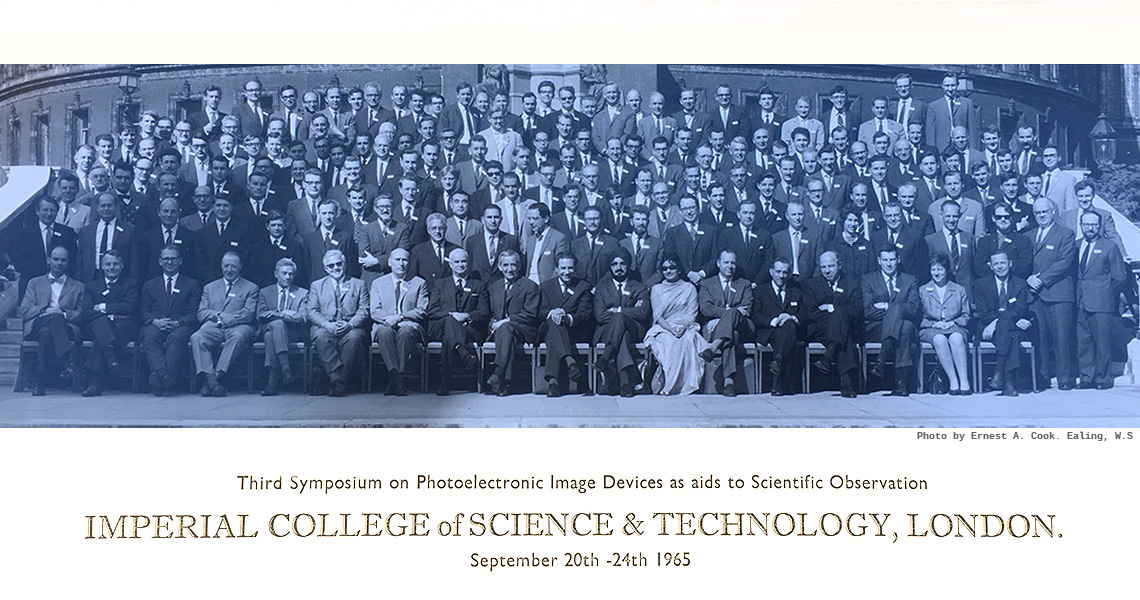
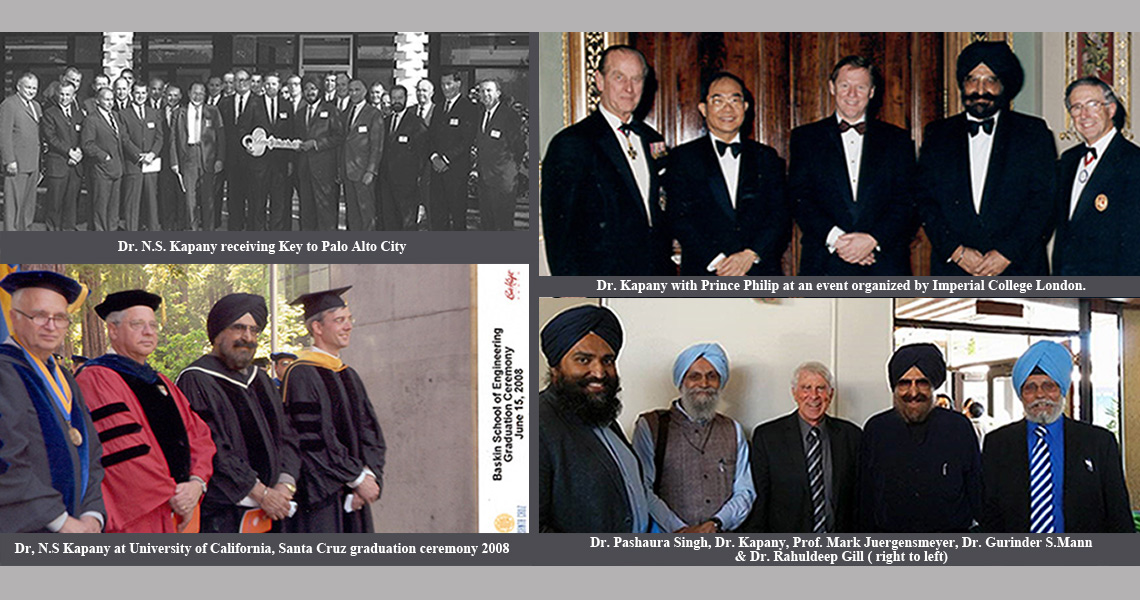
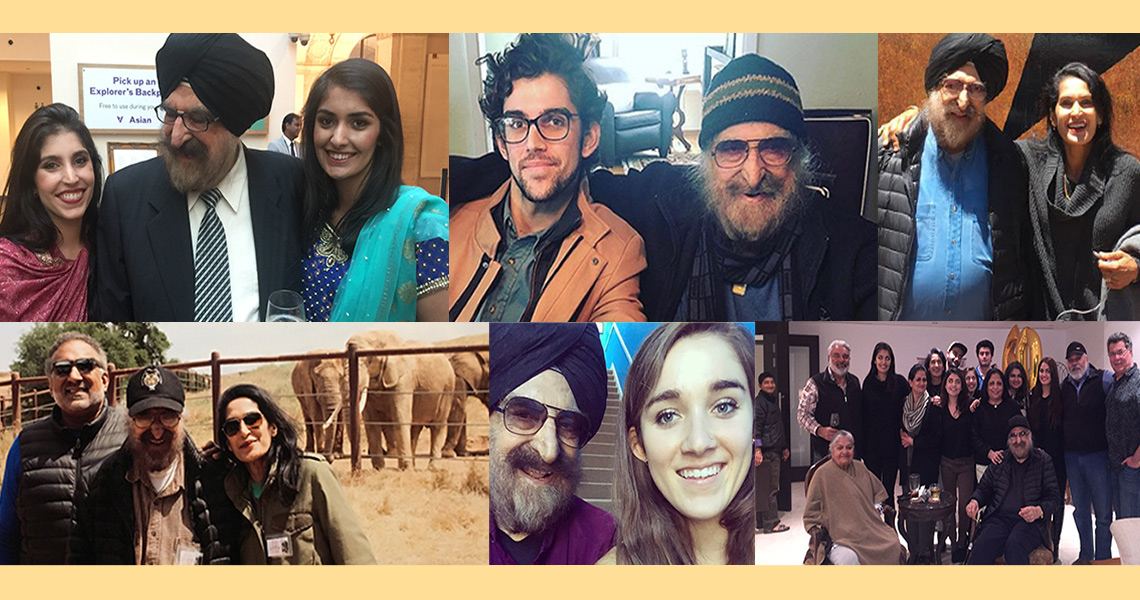
Dr. Narinder Singh Kapany, widely known as the father of fiber optics, passed away peacefully in Woodside, California on December 3rd, 2020.
In 1953, working alongside Harold Hopkins at Imperial College London, Dr. Kapany was the first to successfully transmit high quality images through fiber bundles. He coined the term “fiber optics” in a famous 1960 article for Scientific American. “When light is directed into one end of a glass fiber,” Dr. Kapany wrote, “It will emerge at the other end. Bundles of such fibers can be used to conduct images.” His breakthrough achievements helped create a foundational element of the internet age, affecting the lives and businesses of everyone around the world.
Born on 31st Oct. 1926 in the town of Moga, Punjab-India, Kapany grew up in the Himalayan foothill city of Dehradun and graduated in 1948 from Agra University, later receiving his doctorate from Imperial College London in 1955. He married Satinder Kaur, and the couple soon migrated to the United States where he first worked at Rochester University and then at the Illinois Institute of Technology in Chicago.
In 1961, the couple moved to Woodside where Kapany founded Optics Technology Inc. successfully taking it public in 1967. He was the first Sikh Indian to take a company public in Silicon Valley. The San Francisco Examiner, in February 1969, described him as “…the most dashing corporate officer in the area”. Subsequently, he founded Kaptron Inc. in 1973, which was later acquired by AMP Inc. In 1999, he was named one of seven “unsung heroes” in Fortune magazine’s “Businessmen of the Century” issue.
Dr. Kapany wrote four books on fiber optics and entrepreneurship. His seminal research in fiber optics, lasers, and solar energy, and their applications in bio-medical instruments, defense, communications, and pollution-monitoring earned him more than 100 patents. In 1979, Dr. Kapany created the Center for Innovation and Entrepreneurial Development at the University of California Santa Cruz where he also later endowed a Chair in Opto-Electronics. He was also a Regents Professor at UC Berkeley, a visiting scholar at Stanford University and served on the Board of Trustees at both the University of California Santa Cruz and Menlo School. A member of numerous scientific societies, Dr. Kapany was a fellow of the British Royal Academy of Engineering, the Optical Society of America, and the American Association for the Advancement of Science.
Dr. Kapany was a noted philanthropist, deeply committed to championing Sikh culture and language. He created the Sikh Foundation in 1967 which pioneered the display of Sikh arts at the Victoria and Albert Museum in London, the Smithsonian Museum in Washington, DC, and at the Rubin Museum in New York. He established the first permanent Sikh art gallery in the United States at the Asian Art Museum in San Francisco and in Canada at the Montreal Museum of Art. In noting those accomplishments, Dr. Nikky-Guninder Singh, who chairs the Department of Religious Studies at Colby College, commented that the Sikh world has “lost a visionary leader and a passionate promoter of our art, history, culture, and literature.”
Dr. Kapany received numerous awards including The Excellence 2000 Award from the USA Pan-Asian American Chamber of Commerce in 1998, the Pravasi Bharati Award by the Indian Government in 2008, an Honorary Doctorate by the Guru Nanak Dev University, the Fiat Lux Award by the University of California in 2008 and the Asia Game Changer West Award in 2019.
Narinder Kapany was a man of enormous intellect, boundless energy, and a lovely loud and infectious laugh. His passionate commitment to science and Sikh art left an indelible impact. His limitless curiosity, ferocious engagement in most everything, and his delightful laughter added light and warmth to the world. He spent the last year writing his memoirs, The Man Who Bent Light, and we hope to make that available by spring 2021.
He was preceded in death by his beloved wife Satinder Kapany and is survived by his son Rajinder Singh Kapany, daughter Kiran Kaur Kapany, and his four grandchildren Ariana, Misha, Tara, and Nikki.
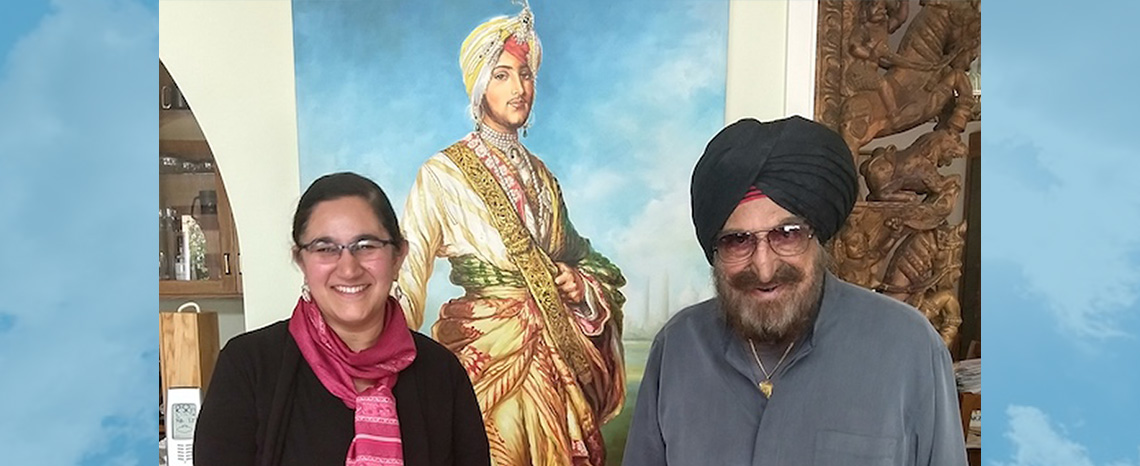
Dr Narinder Kapany, father of fiber optics, was more than a scientist
“Every morning in Africa a gazelle wakes up. It knows it must run faster than the fastest lion or it will be killed. Every morning a lion wakes up. It knows it must outrun the slowest gazelle or it will starve to death. It doesn’t matter if you are a lion or gazelle. When the sun comes up you’d better be running…”
This framed quote on his office bookshelf gives a good insight into the mind of Dr Narinder Singh Kapany, widely known as the “father of fiber optics”.
Dr Kapany passed away peacefully in Woodside, California on December 3, 2020.
Amongst the most acclaimed scientists, researchers, academicians, entrepreneurs, philanthropists and art collectors in the world, his contributions span the fields of lasers, optics, medicine, academics, entrepreneurship, arts & philanthropy.
Throughout his life he took immense pride in his Sikh identity and heritage even headlining a newspaper article in 1957 as “Scientist wears turban and tie” (Chicago Daily News, Wedneday, July 31, 1957)
Born on October 31, 1926 in the town of Moga in Punjab, India, he grew up in the Himalayan foothill city of Dehradun and graduated in 1948 from Agra University.
As early as 1947, he challenged the concept that light only travels in straight lines.
He moved to London for his advanced studies in optics at the Imperial College of Science and Technology, where in 1952 he successfully demonstrated that light can be bent.
This discovery changed the world forever. Coining the term fiber optics, he laid the foundations for the Internet age, which was to follow.
Soon after his marriage to Satinder Kaur, the couple migrated to the United States in 1955. He thrived as a research scientist first at Rochester University, NY and then at the Illinois Institute of Technology at Chicago.
His research in fiber optics, lasers, solar energy and its applications in defense, bio-medical instruments, communications and pollution control monitoring earned him more than 100 important patents.
In 1961, his next big move was to San Francisco where he founded Optics Technology Inc and successfully took it public in 1967. The San Francisco Examiner described him as “…the most dashing corporate officer in the area” (February 9, 1961).
He also founded Kaptron Inc in 1973. Ever the entrepreneur and scientist, at age 83, he set up his another company to work on solar energy.
He and his wife, Satinder, were both artists and also avid art collectors. They scoured the globe for all things Sikh, making their home in Woodside a virtual museum.
Narinder defined Sikh art as art by, for and about Sikhs. Their expansive and magnificent Sikh art collection is representative of Sikh artistic expression in all its forms — paintings, manuscripts, textiles, stamps, coins, arms and armor, sculpture, etc.
They not only put together a collection unparalleled in its range and quality, but also were happy to share it with the world.
Artworks were loaned out to numerous museums including the Victoria & Albert Museum in London, the Smithsonian In Washington, DC and the Rubin Museum of Art in New York for exhibits.
The seal ring of Maharaja Ranjit Singh, the delicate Sikh sketches by Emily Eden, the vibrant phulkaris embroidered by deft hands, the Nanak Shahi coins, symbols of sikh sovereignty, and so much more was shared readily with the world.
I wonder how else would we, as a community, be able to experience the totality of our rich Sikh artistic heritage if it was not for this magnificent collection.
In 2003, he gifted 100 magnificent Sikh artworks to the Asian Art Museum in San Francisco, establishing for perpetuity the Satinder Kaur Kapany Gallery of Sikh Art, the first permanent Sikh art gallery in the west.
Recently, the Montreal Museum of Fine Art was the beneficiary of another significant gift of 150 artworks, leading the way for Canada’s first permanent Sikh art gallery.
Philanthropy is not something he set out to do in his later years. Dr Kapany set up the Sikh Foundation as early as in 1967, with the promise to create an understanding of the history, art and culture of Sikhs.
Speaking at the 50th Anniversary Gala of the Sikh Foundation at the Asian Art Museum San Francisco, on May 5, 2017, he addressed the audience and said: ” We should ensure that our friends of other faiths, races and cultures understand who and what we are. We must present the beauty of our heritage without chauvinism. The wisdom, philosophy and arts of the Sikh faith belong to the world.”
He fully lived the Sikh concept of “Dasvandh” which is sharing one tenth of your earnings with others.
His commitment to education inspired him to establish the first of its kind Kundan Kaur Kapany Chair of Sikh & Punjabi Language Studies in 1991 at UC Santa Barbara, which is named in honor of his mother.
He also endowed a chair of Opto-Electronics and a professorship in Entrepreneurship at UC Santa Cruz.
Honoring his father, Sundar Singh Kapany, he gifted his extensive collection of Sikh books to the McHenry Library at UC Santa Cruz along with the dedication of a reading room.
He led community efforts to establish three other chairs of Sikh Studies at university campuses in California, generously contributing both time and resources. He regularly contributed to support Sikh youth in the Punjab.
As an author and researcher, he published over 100 scientific papers and four books on Opto-electronics and entrepreneurship.
He was Regents Professor at the UC Berkeley and UC Santa Cruz and visiting scholar to Stanford University in the Physics department and consulting professor in the Department of Electrical Engineering. In 1979 he started the Center for Innovation & Entrepreneurial Development (CIED) at UC Santa Cruz.
He was an active member of the US National Inventors Council, Young Presidents Organization, The India-America Council, and Rotary Club of Palo Alto.
Dr Kapany received numerous awards including The Excellence 2000 Award from the USA Pan-Asian American Chamber of Commerce in 1998, the Pravasi Bharati Award by the Indian government in 2008, an honorary doctorate by the Guru Nanak Dev University, the Fiat Lux Award by the University of California in 2008 and the Asia Game Changer West Award in 2019.
His faith and pride in his Sikh heritage was deep rooted and motivated his entire life.
He spent the last years of his life writing his memoirs, The Man Who Bent Light, which should be available in spring 2021.
In his office at the Sikh Foundation in Palo Alto, California hung a huge oil painting of the Kar Sewa at the Golden Temple by artist Sukhpreet Singh.
In front of his desk stood the majestic bronze sculpture of Maharaja Ranjit Singh.
I fondly recall him saying: “I am a lucky man. I have my Guru behind me and my Maharaja in front.”
Indeed, so I am for having had the opportunity to work with him for almost 15 years and be inspired by his vision, character, personality, intellect, energy and his famous booming laughter.
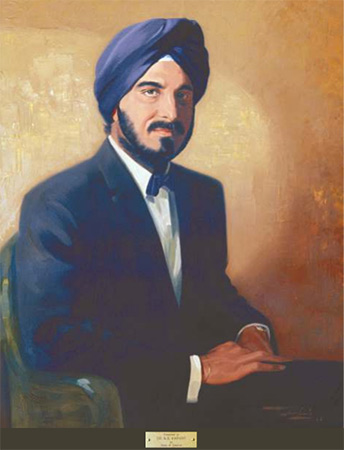
Narinder Singh Kapany: The Man and His Accomplishments
by Gurinder Singh Mann (Excerpt, Ch 2, Sikh Art from the Kapany Collection )
Dr. Kapany (born 1926), as he is known among his circle of friends, is a multifaceted personality. An immigrant who left India, his country of birth, in 1951, he has immersed himself wholeheartedly in the mainstream culture of the West, while firmly continuing to nourish the Sikh religious identity he imbibed in his early years. He loves and cares deeply for his family and, in turn, was adored by his late wife, and is loved by his two children and four grandchildren. He also has a wide circle of friends from whom he seeks advice, and they all believe that his presence and unshakable sense of optimism enrich their lives. For his professional colleagues, he is a physicist with the acclaimed distinction of being one of the key inventors of fiber optics, a concept that revolutionized the world of communication.
He is also an entrepreneur, a founder of three technical companies, and a member of the board of directors of several others. His acumen is a source of emulation for many working in Silicon Valley, California. For those interested in Sikh art, he is the leading collector of Sikh material heritage (art, numismatics, manuscripts, rare books, textiles, and weaponry) in the Western world, and has, over time, acquired the wherewithal to engage curators at prestigious museums around the globe in conversations about the significance of Sikh art. Combining his love of science and art, he is also known as the creator of a set of “Dynoptic sculptures,” which have been exhibited in several museums in the United States.
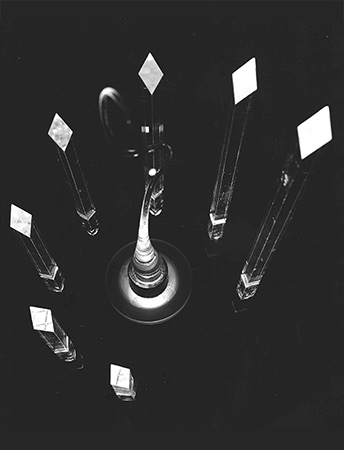
Artistic Gifts and Creations of Dr. Narinder S. Kapany
by Gurnam S. S. Brard (Excerpt, Ch 3, Sikh Art from the Kapany Collection )
Condolence Messages:
“We are all grieved to learn about the sad demise of your dear father, Dr. Narinder Singh Kapany. On this occasion I fondly recall my old association with him in many meetings discussing important issues….I think our best tribute to Dr. Kapany would be to finish some of the projects that he had envisaged and promote Sikh studies among the diaspora for better understanding and peaceful co-existence.” – Dr. Manmohan Singh, ex-Prime Minister, India
(Click here to view the letter)
“His Highness Sheikh Hamad bin Abdullah Al Thani is sorry to receive news of the passing of Dr. N.S Kapany. He would like to send his condolences to Dr. Kapany’s family, as well as to his friends and colleagues. He hopes that they will be comforted in the knowledge that he has made such a profound difference to people’s lives through both his professional achievements, and through the generosity of his cultural and philanthropic endeavours.” – His Highness Sheikh Hamad bin Abdullah Al Thani through Matthew Paton (Paton Arts)
“May God rest his soul, Amen. My most sincere condolences to you and to the Kapany family. We were truly blessed to have known him.” – Paul Michael Taylor
“Indeed it’s a terribly tragic moment for the Sikh world. We have lost a visionary leader, a passionate promoter of our art, history, culture, literature, a phenomenal human being!” – Nikky-Guninder Kaur Singh
“My prayers for the peace of the parted soul and heartfelt condolences to all at the Sikh Foundation. A critical chapter of Sikh history in the U.S. has come to close.” – Gurinder Singh Mann
“It’s such sad news and we have truly lost a legend. Its an end of an era and it so true, but his legacy will live on through his work and Foundation.” – Peter Bance
“May he rest in peace, this lover and humble servant of the Gurus.”- Arpana Caur
“I was saddened by his departure. We all have to go one day. But Dr. Kapany was a stalwart who was the force behind all Sikh Studies Chairs. We will miss him. He was larger than life.” – Pashaura Singh
“My deep and sincere condolences. Dr. Kapany was in so many ways an inspiration. I have lost a dear friend and mentor.” – Fakir Aijazuddin
“We pray that Satguru grants peace to the departed soul and courage to you all to bear this loss with fortitude. I think our best tribute to Dr.Kapany would be to promote the values which were dear to him.” – Mohinder Singh
“May Waheguru bless him with “Parmatma dae charna vich nivas”. Waheguru sanoo Bhana munan dal bal bakhsae. My condolences to the family and Sikh Foundation.” – Bhupinder (Bo) Singh
“My deepest condolences and also convey my condolences to his family, his son Rajinder and daughter Kiran. May his soul rest in peace with the Akal Purakh.” – Anshu Malhotra
“Dr. Kapany Ji, final sat sri akaal! Really he changed my life…..Our Art bridge…Thanks Dr sahib all your efforts.”- Sukhpreet Singh, Artist
“I am lucky and grateful and honored to have met him that one time. He was a towering figure, historically, intellectually, spiritually and so much more. He put me in tune with my own heritage, a part of myself that I had never really contemplated too much.” – Gary Singh
